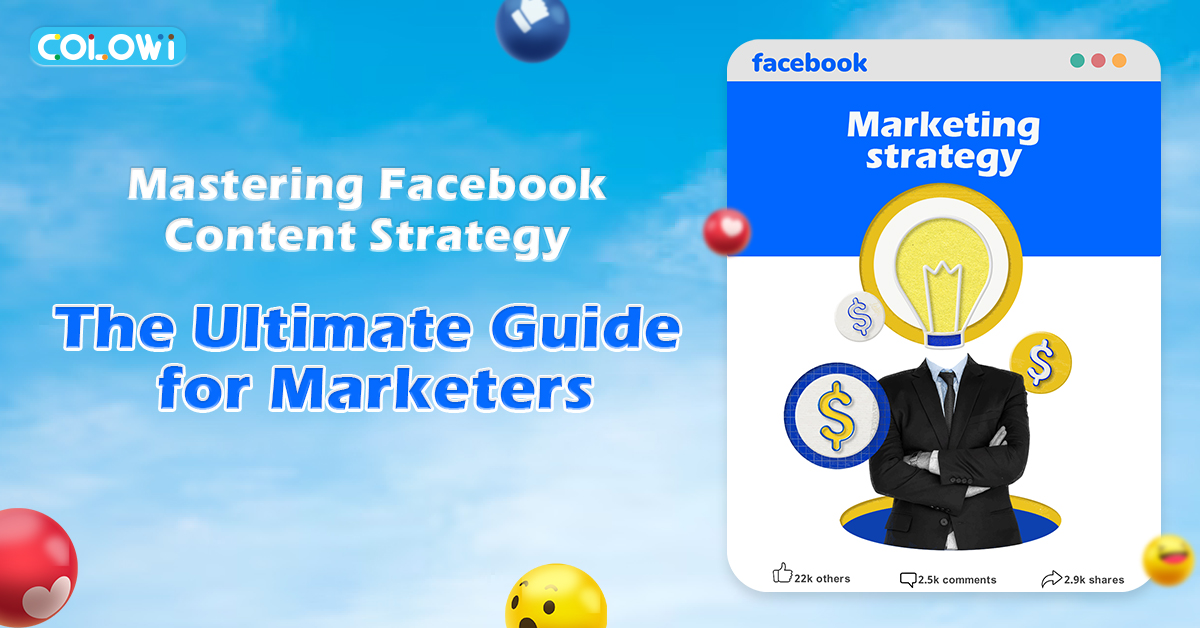In today’s digital age, Facebook has become an essential platform for businesses and marketers to reach and engage with their target audiences. But with millions of businesses vying for attention, it can be challenging to stand out and make an impact. That’s where mastering Facebook content strategy comes in. In this comprehensive guide, we’ll cover everything you need to know to develop a winning Facebook content strategy. From defining your target audience and creating compelling posts, to optimizing your page and measuring success with analytics, we’ll explore the dos and don’ts of Facebook advertising and the role of user-generated content. We’ll also discuss future trends in Facebook content strategy and share tips for staying ahead of the curve. Whether you’re new to Facebook marketing or looking to take your content strategy to the next level, this ultimate guide is a must-read for any marketer looking to succeed on Facebook.
1.The importance of defining your target audience in your Facebook content strategy
The importance of defining your target audience in your Facebook content strategy
Defining your target audience is the foundation of any successful marketing strategy, and this is especially true for Facebook content strategy. Understanding who your ideal customer is, what they’re interested in, and what motivates them can help you tailor your content to their needs and preferences. By identifying your target audience, you can create content that speaks directly to them, which can drive engagement, increase brand loyalty, and ultimately, boost conversions.
2.Best practices for creating compelling Facebook posts that drive engagement
Best practices for creating compelling Facebook posts that drive engagement
Creating compelling Facebook posts is essential to capturing your audience’s attention and driving engagement. Best practices for Facebook posts include using eye-catching visuals, writing attention-grabbing headlines, and crafting compelling copy that connects with your target audience. Other factors that can contribute to engagement include posting at optimal times, using humor or emotional appeals, and incorporating user-generated content.
3.How to develop a content calendar and posting schedule for your Facebook content strategy
How to develop a content calendar and posting schedule for your Facebook content strategy
Developing a content calendar and posting schedule is critical for ensuring that your Facebook content strategy is consistent and effective. A content calendar can help you plan out your content in advance, ensuring that you have a mix of content types (such as videos, images, and blog posts) and that you’re addressing the needs and interests of your target audience. A posting schedule can help you determine when and how often to post, which can impact engagement rates.
4.Tips for optimizing your Facebook page and profile for maximum visibility and engagement
Tips for optimizing your Facebook page and profile for maximum visibility and engagement
Optimizing your Facebook page and profile is crucial for maximizing your visibility and engagement on the platform. Tips for optimization include creating a compelling profile and cover photo, using targeted keywords in your About section, regularly updating your page with fresh content, and responding to comments and messages in a timely manner. Other factors that can impact your visibility and engagement include using Facebook’s various features (such as Groups, Events, and Stories) and engaging with other pages and communities.
5.The role of visuals in your Facebook content strategy and how to create effective graphics and videos
The role of visuals in your Facebook content strategy and how to create effective graphics and videos
Visuals are a critical component of any Facebook content strategy. High-quality images and videos can help capture your audience’s attention and convey information quickly and effectively. Tips for creating effective visuals include using high-quality photos and videos, incorporating branding elements (such as logos and colors), using text overlays to emphasize key messages, and experimenting with different formats (such as 360-degree photos or live videos).
6.Using Facebook Insights and other analytics tools to measure the success of your content strategy
Using Facebook Insights and other analytics tools to measure the success of your content strategy
Measuring the success of your Facebook content strategy is essential for determining what’s working and what’s not, and for making data-driven decisions about future content. Facebook Insights is a powerful analytics tool that provides detailed information about your page’s performance, including engagement rates, reach, and demographics. Other analytics tools that can be useful for measuring success include Google Analytics and social media management platforms such as Hootsuite or Buffer.
7.Strategies for integrating Facebook Live and other real-time content into your Facebook content strategy
Strategies for integrating Facebook Live and other real-time content into your Facebook content strategy
Facebook Live and other real-time content can be a powerful way to engage with your audience in real-time, build trust, and create a sense of community. Strategies for incorporating Facebook Live into your content strategy include planning in advance, promoting your live event in advance, engaging with viewers during the broadcast, and repurposing the content afterwards. Other real-time content formats to consider include Instagram Stories and Facebook Stories.
8.The dos and don’ts of Facebook advertising as part of your content strategy
The “dos and don’ts” of Facebook advertising refer to best practices and potential pitfalls that marketers should consider when creating ads as part of their content strategy. Some of the “dos” include effectively targeting your audience, using visually appealing and engaging ads, and providing value to your audience. Some of the “don’ts” include using clickbait or misleading ads, using overly aggressive or spammy tactics, and neglecting to test and optimize your ads for maximum effectiveness. By following these guidelines, marketers can create effective and well-received Facebook ads that drive engagement and conversions.
9.How to leverage user-generated content to enhance your Facebook content strategy
Leveraging user-generated content (UGC) can be a powerful way to enhance your Facebook content strategy. UGC refers to content that is created and shared by users, such as reviews, testimonials, and photos. By incorporating UGC into your Facebook content strategy, you can increase engagement, build trust with your audience, and showcase the real-life experiences of your customers. Some ways to leverage UGC include encouraging customers to share their experiences with your brand, featuring UGC in your Facebook ads and posts, and repurposing UGC for other marketing channels. By incorporating UGC into your Facebook content strategy, you can create a more authentic and compelling brand experience for your audience.
10.Future trends in Facebook content strategy and how to stay ahead of the curve.
As with any marketing strategy, Facebook content strategy is always evolving, and it’s important to stay up-to-date on the latest trends and best practices. Some future trends in Facebook content strategy may include the continued importance of visual content, the rise of augmented reality (AR) and virtual reality (VR) experiences, and the growing importance of social commerce. To stay ahead of the curve, marketers should stay informed about the latest Facebook updates and features, experiment with new types of content and advertising formats, and continuously test and optimize their strategies for maximum effectiveness. By staying ahead of the curve and adapting to the latest trends in Facebook content strategy, marketers can continue to reach and engage their target audience in new and exciting ways.
In conclusion, mastering Facebook content strategy requires understanding your target audience, creating a content calendar, creating engaging posts, following best practices for Facebook advertising, measuring success, and studying successful examples. By applying these principles and continuously refining your strategy, you can create an effective Facebook





